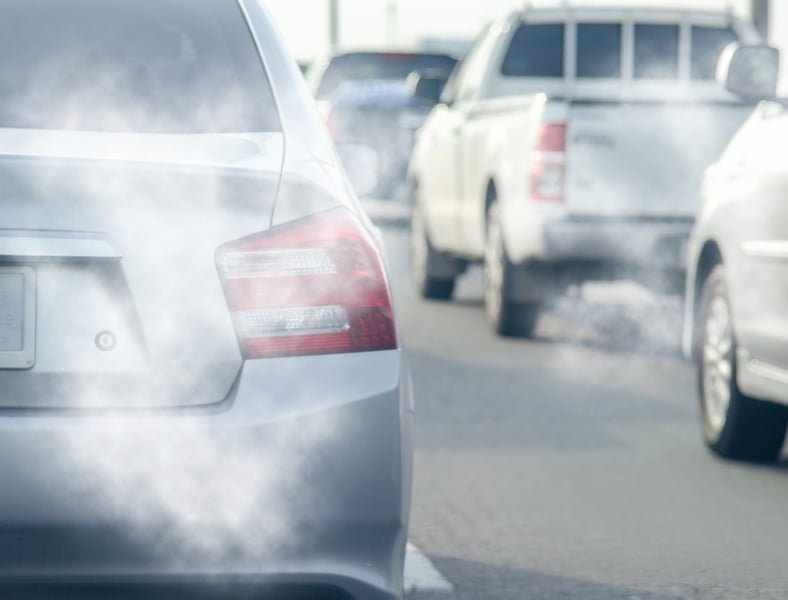Get Healthy!

- Alan Mozes
- Posted September 28, 2023
Smoggy Days Raise Short-Term Odds for Stroke
Exposure to air pollution, even for just a short time, drives up your risk of having a stroke over the next few days, new research warns.
That conclusion stems from a review of 110 studies conducted across Asia, Europe and the Americas.
Depending on the specific nature of the pollutant in question, stroke risk rose anywhere from 5% to 28% within less than a week after first being exposed to high levels of air pollution.
The team also pinpointed a notable increase in the risk of dying from a stroke within a week following air pollution exposure. That jump ranged from just 2% to as much as 60%, depending on the type of pollutant studied.
"The associated stroke risk depends on the pollution, as some are more harmful than others,"explained study author Dr. Ahmad Toubasi, a doctoral student and researcher in the faculty of medicine at the University of Jordan in Amman.
In the Sept. 27 issue of Neurology, the researchers note that stroke accounts for roughly 5 million deaths worldwide every year.
About a quarter of the studies in the new analysis were conducted in Europe. Another 17% focused on the United States or Canada, while about 6 out of 10 studies were done in Asia.
Collectively, the studies explored the potential link between the risk for having a stroke after exposure to any of several key pollutants, including nitrogen dioxide, ozone, carbon monoxide and sulfur dioxide.
Taken together, the studies include more than 18 million cases of ischemic stroke, in which the blood supply to the brain is cut off or compromised.
The review ultimately pegged exposure to nitrogen dioxide to a 28% jump in short-term stroke risk and a 33% jump in the risk of dying due to stroke.
Exposure to carbon monoxide, sulfur dioxide, and high ozone levels was linked to a stroke risk increase of 26%, 15% and 5%, respectively. The short-term risk of dying from a stroke after exposure to sulfur dioxide was particularly high, amounting to a 60% increase.
The review also explored the relative risk that followed short-term exposure to very small particles of air pollution versus notably larger particles.
For example, some air pollutants -- called PM1 -- are less than a single micron in diameter, making it invisible to the naked eye. By comparison, a human hair is about 70 microns in width diameter.
Other pollutants -- including particles spewing from a car exhaust, a fossil fuel plant or a forest fire -- are somewhat bigger, falling generally between PM1 and PM2.5 in size. Large PM10 pollutant particles include dust from roads and construction sites.
The finding: Exposure to PM1 was linked to a 9% jump in stroke risk. Meanwhile, PM2.5 exposure was associated with a 15% increase in stroke risk and a 9% increase in the risk of dying from a stroke. By contrast, PM10 exposure appeared to trigger a 14% rise in stroke risk and a 2% increase in stroke death.
Overall, more was found to be more: the greater the exposure to the various pollutants, the greater the increase in stroke risk.
As to why air pollution raises stroke risk in the first place, Toubasi pointed to a number of ways in which pollution harms the body. Those included driving up blood pressure and clot risk (thrombosis); undermining the integrity of blood vessel linings, and increasing the risk for heartbeat irregularities (arrhythmias).
As to what individuals can do to lower their own risk, a couple of experts shared some thoughts.
"People with cardiovascular risk factors should be especially aware of the risks of air pollution, even on a short-term basis, as indicated in this study,"said Dr. Jesus Araujo, a professor of medicine at the UCLA David Geffen School of Medicine and a professor of environmental health sciences with UCLA's Fielding School of Public Health.
His advice: If and when air pollution levels rise, such patients should reduce the amount of time they spend outdoors.
And anyone who has to be outdoors when pollution is an issue "should consider wearing an N95 mask,"suggested Dr. Mary Johnson, a principal research scientist with the Department of Environmental Health at the Harvard T.H. Chan School of Public Health.
Such masks -- which became ubiquitous during the pandemic -- are "not perfect, but they do filter out some pollutant particles,"she said.
"And if you're indoors, know your indoor air quality,"Johnson added. "People assume that being inside always means better air quality, but that's not actually true. But you can get cheap air quality sensors on Amazon. And if it's not good, then get a purifier. And if you have a centralized heating and AC system, then make sure you have clean filters on hand."
More information
There's more on the impact of air pollution on brain health at NYU Langone Health.
SOURCES: Ahmad Toubasi, MD, PhD candidate and researcher, faculty of medicine, University of Jordan, Amman; Mary Johnson, MD, PhD, principal research scientist, Department of Environmental Health, Harvard T.H. Chan School of Public Health, Boston; Jesus Araujo, MD, PhD, professor, medicine, and professor, environmental health sciences, UCLA Fielding School of Public Health, Los Angeles; Neurology, Sept. 27, 2023






